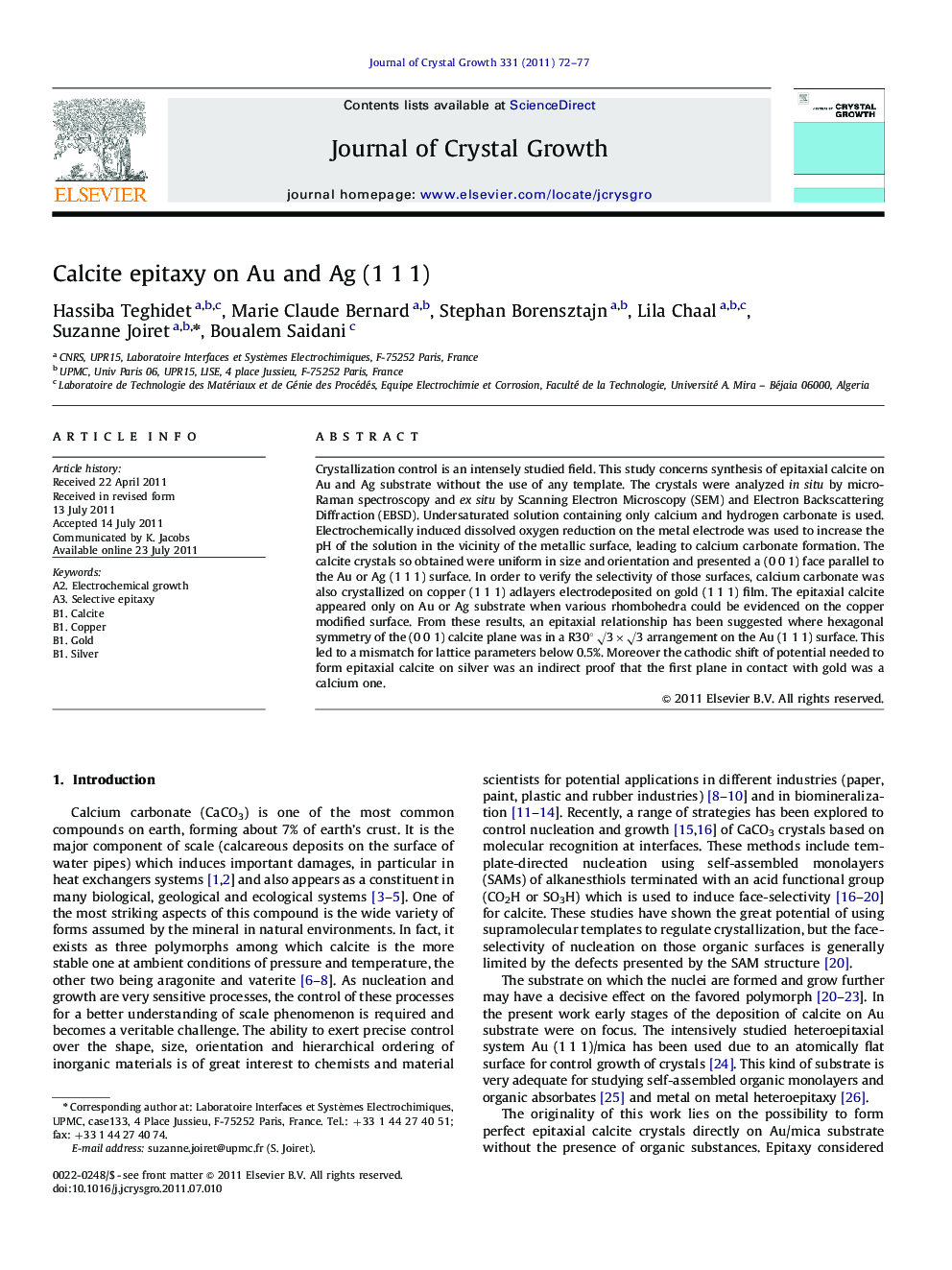| Article ID | Journal | Published Year | Pages | File Type |
|---|---|---|---|---|
| 1792274 | Journal of Crystal Growth | 2011 | 6 Pages |
Crystallization control is an intensely studied field. This study concerns synthesis of epitaxial calcite on Au and Ag substrate without the use of any template. The crystals were analyzed in situ by micro-Raman spectroscopy and ex situ by Scanning Electron Microscopy (SEM) and Electron Backscattering Diffraction (EBSD). Undersaturated solution containing only calcium and hydrogen carbonate is used. Electrochemically induced dissolved oxygen reduction on the metal electrode was used to increase the pH of the solution in the vicinity of the metallic surface, leading to calcium carbonate formation. The calcite crystals so obtained were uniform in size and orientation and presented a (0 0 1) face parallel to the Au or Ag (1 1 1) surface. In order to verify the selectivity of those surfaces, calcium carbonate was also crystallized on copper (1 1 1) adlayers electrodeposited on gold (1 1 1) film. The epitaxial calcite appeared only on Au or Ag substrate when various rhombohedra could be evidenced on the copper modified surface. From these results, an epitaxial relationship has been suggested where hexagonal symmetry of the (0 0 1) calcite plane was in a R30° √3×√3 arrangement on the Au (1 1 1) surface. This led to a mismatch for lattice parameters below 0.5%. Moreover the cathodic shift of potential needed to form epitaxial calcite on silver was an indirect proof that the first plane in contact with gold was a calcium one.
► We examine the capabilities of gold, silver and copper to nucleate epitaxial calcite. ► On gold and silver (1 1 1) calcite is (0 0 1) orientated, not on copper (1 1 1). ► We propose an in plane epitaxial relationship. ► We examine the nature of the calcite contact plane and found that it is probably calcium.
